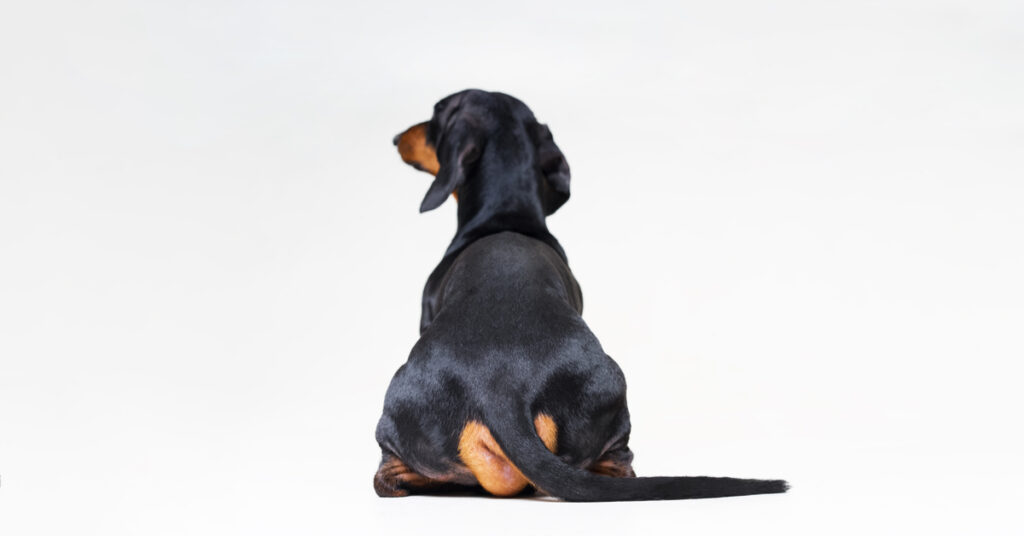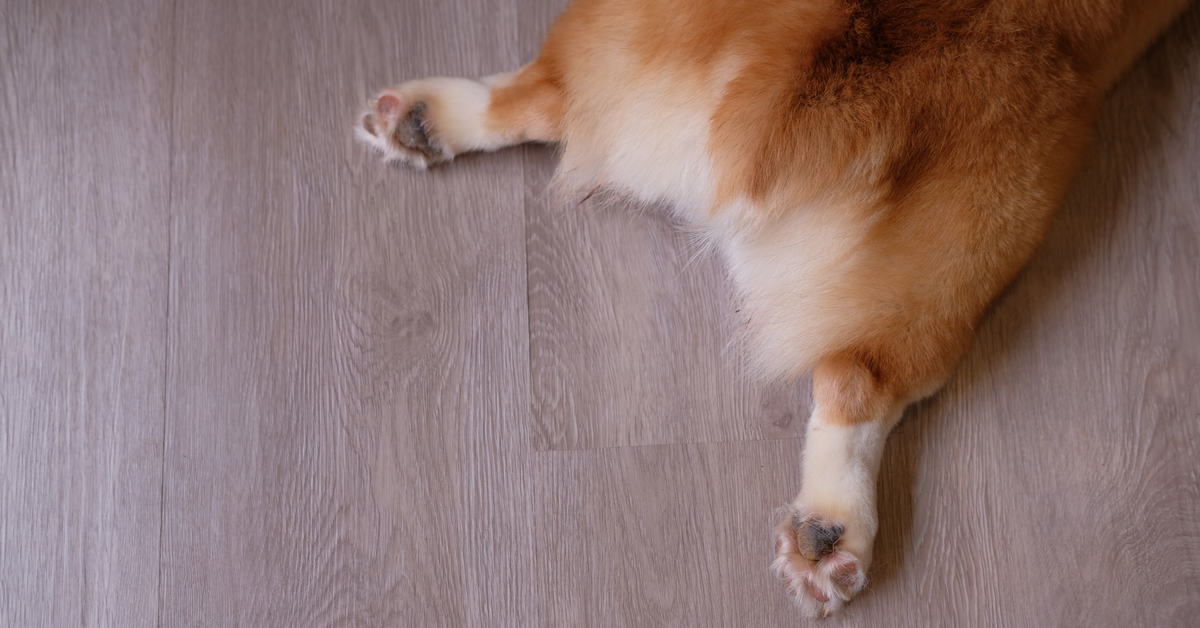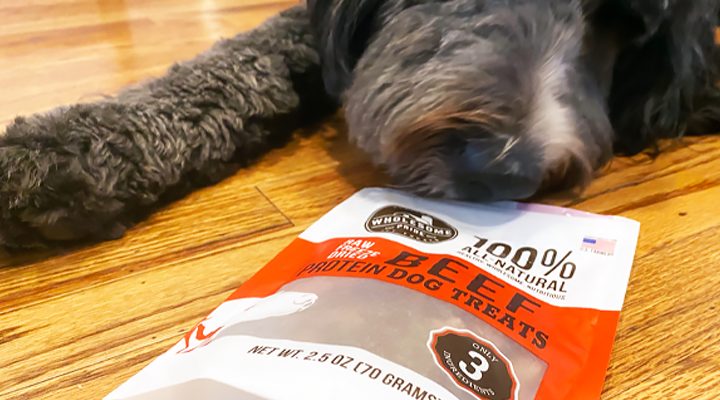Booty Health & How to Express Anal Glands in Dogs

It’s gross topic o’clock! Let’s talk butthole health. (Seriously.) As a pet parent, you likely know that many dog anal glands need expressing every once in a while. Why do we need to express anal glands in dogs? To use a cliché, it’s essentially a (foul-smelling) cog in the machine that needs to work properly in order to avoid a malfunction. Or in a dog’s case, infection.
You might recognize the main sign of infection or anal discomfort in your dog by this signature move: the scoot. Dog scooting is when a dog drags their rear ends across your floors. Another sign of anal gland issues is when they excessively gnaw on or lick their butt. That’s when you know it’s time for an anal gland expression.
Let’s take a closer look at why anal gland expression is important, how it’s done, how often it should be done, and how to avoid infection.
What are anal glands and how do they work?
Washington State University’s College of Veterinary Medicine describes anal glands as the scent glands located around a dog’s anus and sphincter that produce a potent-smelling oily secretion. The stinky secretion is stored inside a dog’s anal sacs, and every time your dog poops, a small amount of that fluid is released. It is also common for dogs to express their own anal glands in instances where they are very frightened or nervous.
We all know that the dog equivalent of a handshake is to check out each other’s buttholes. When dogs greet each other, they are smelling the secretion of their anal glands. Each dog’s secretion has a distinct scent.
The secretions need to be released when your dog does a bowel movement in order to flush out stored bacteria. When your dog defecates but the sacs are impacted, it gets trapped. Then an infection occurs, which can lead to an anal sac abscess, according to DVMs at VCA Animal Hospitals.
Where the anal gland problems start

A dog has issues with their anal glands when they become inflamed and unable to secrete enough of the fluid, causing the sacs to get too full (aka impacted). Impaction is no joke. Impacted anal sacs can get infected, cause an abscess, or worse — rupture, which can require surgery.
Small breed dogs like beagles, cocker spaniels, and chihuahuas are more prone to impacted anal glands than large breeds. Signs that your dog needs an expression, has impacted glands, or anal gland infection include:
- Scooting
- Licking and/or biting anal area
- A red or inflamed anus
- Consistently soft stools or loose stools when defecating
- A strong fishy smell that is much worse than normal anal gland fishy smell
- If ruptured, blood or pus coming from the rectum
Dog owners should monitor their dog’s defecation, stool consistency, and their dog’s diet. Constipation and diarrhea can be caused by food allergies, poor quality commercial dog food, and obesity. Overweight dogs who don’t get enough fiber in their diet are at higher risk for incontinence and therefore, infected anal glands.
If your dog is showing any of the aforementioned behaviors and signs, call your vet.
How are anal gland issues treated?

If you think your dog has an issue with its anal sacs, make an appointment with your veterinarian as soon as possible. If they have a severe anal gland abscess, the anal sacs might need to be removed via surgery.
Treatment for impaction involves manual expression of the glands. Squeamish pet owners should leave this to the professionals.
Here’s how vet’s express anal glands in dogs:
Wearing latex gloves, your veterinarian will rub Vaseline on their index finger, then insert the finger into the dog’s anus and feel around the side of the anus for the sac. It is then gently squeezed to squirt the liquid out, which is caught in a paper towel to avoid a nasty mess.
Were you still able to keep your lunch down after reading that? Good.
This process can sometimes be painful for your dog and might require a sedative or an anesthetic. Antibiotics and anti-inflammatories might also be prescribed.
Anal sac removal: when you can’t express anal glands in dogs
Anal sac problems may not go away. Some pet owners elect to get their dog’s anal sacs removed from their dog’s butt completely. Technically for domesticated dogs, anal sacs aren’t necessary because they don’t need to be marking their territory out in the wild.
If you elect to get your dog’s anal sacs removed, know that general anesthesia is required and like all surgeries, it carries a degree of risk including nerve damage.
Other reasons for your dog’s scooting
Do dogs scoot just because of anal gland issues? There are actually other common reasons why your dog may be butt scooting other than anal sac issues. Other common causes of scooting/butt-dragging include tapeworms in the intestine/intestinal parasites, fleas, an open wound, and even tumors. He could even have a little “dingleberry” feces leftover that’s making him uncomfortable.
The Gland Plan: Making Sure Your Dog’s Anal Glands Are Emptying Properly

In order to ensure your dog’s anal glands are emptying properly, your veterinarian will typically express them during your dog’s annual wellness check. Many dog groomers also offer this service.
Prevention methods are key. In order to prevent your dog from getting an anal gland infection, make sure your dog is on a healthy diet with plenty of fiber and gets enough exercise. You can also supplement his diet to keep him regular. To ensure your dog’s diet is healthy, give them dog treats with limited ingredients to reduce stomach upset.
As always, talk to your vet if you think your dog is having butt problems. And no need to be embarrassed — they deal with this kind of stinky stuff all the time! At the end of the day, you are doing what’s best for your pet’s overall health and happiness.

